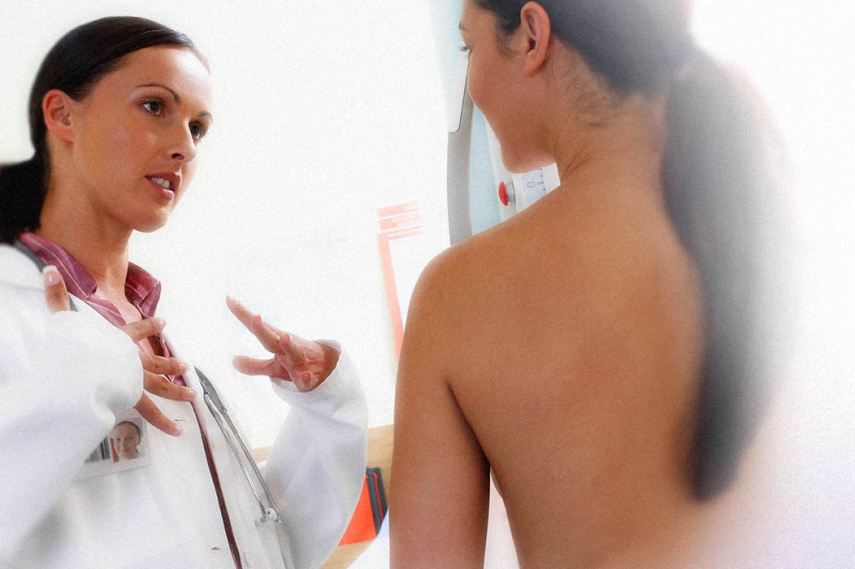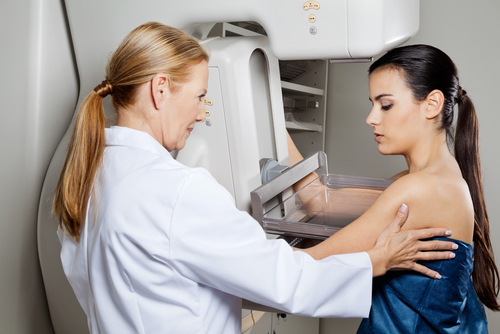
Mammogram After Breast Augmentation
 A mammogram is a diagnostic tool used to detect breast cancer as early as possible. Research has shown that regular mammograms can lead to detection of breast cancer at less advanced stages, which can prevent the need for more radical cancer treatment such as mastectomy. According to the National Cancer Institute, women ages 40 and older should have a mammogram every 1 to 2 years. It is also recommended that women perform a self breast exam (SBE) at least once a month. An SBE can detect lumps or abnormalities in the breasts. Mammograms can detect tumors before they can be felt.
A mammogram is a diagnostic tool used to detect breast cancer as early as possible. Research has shown that regular mammograms can lead to detection of breast cancer at less advanced stages, which can prevent the need for more radical cancer treatment such as mastectomy. According to the National Cancer Institute, women ages 40 and older should have a mammogram every 1 to 2 years. It is also recommended that women perform a self breast exam (SBE) at least once a month. An SBE can detect lumps or abnormalities in the breasts. Mammograms can detect tumors before they can be felt.
Studies have shown that a woman with implants is no more likely to develop breast cancer than a woman who does not have implants. However, implants can interfere with the visibility of a tumor during a mammogram. Here are a few ways a woman with breast implants can get the most accurate result with a cancer screening:
1. Tell the mammography technician you have breast implants.
![]() Since breast augmentation has become such a popular procedure, with over 290,000 procedures performed in 2013, many technicians are familiar with how to more effectively position the breast so that the implant will not impede visibility of the breast tissue. With a method of positioning the augmented breast called Eklund displacement views, the implant is pushed back against the chest wall, and the breast tissue is pulled forward and around the implant so that it can be seen in a mammogram. You should tell the technician you have breast implants prior to your screening so that he or she is sure to implement this positioning.
Since breast augmentation has become such a popular procedure, with over 290,000 procedures performed in 2013, many technicians are familiar with how to more effectively position the breast so that the implant will not impede visibility of the breast tissue. With a method of positioning the augmented breast called Eklund displacement views, the implant is pushed back against the chest wall, and the breast tissue is pulled forward and around the implant so that it can be seen in a mammogram. You should tell the technician you have breast implants prior to your screening so that he or she is sure to implement this positioning.
Many women are concerned about implant rupture during a mammogram, but this is a very rare occurrence. The rate of implant rupture is especially low with silicone-gel implants that are highly cohesive, and implants that are placed submuscularly are even less susceptible to this risk.
2. Choose a facility that has plenty of experience with breast augmentation patients.
Facilities that are accredited by the Accreditation Association of Ambulatory Health Care (AAAHC) must meet stringent and specific quality management procedures. Women who choose one of these facilities are more likely to get the best quality care and the most knowledgeable technicians to perform their cancer screening. These facilities typically also have the most advanced technology available.
3. Consider an MRI instead of a mammogram.
Even though the risk is very low, it is possible that a mammogram could cause implant rupture. If this is a primary concern for the patient, they may feel more comfortable choosing a breast MRI, which is a very sensitive study for the detection of breast cancer. It is also the best study available to determine if a silicone breast implant is ruptured. Women who have a family history of breast cancer and those with dense breasts should talk with their doctor about whether a breast MRI should be performed instead of or in addition to a screening mammogram.
If you are interested in cosmetic surgery such as breast augmentation in the Orange County area, please schedule a consultation by calling Finesse Plastic Surgery at (888) 392-6013. For your convenience, you may also fill out our online contact form.
